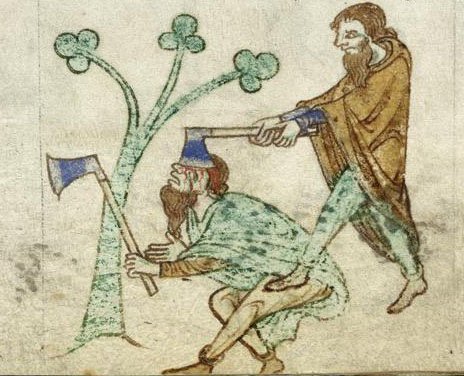- Download:
- MP3 Audio76 MB

We return from an unplanned semester hiatus with the third installment of our Medieval True Crime miniseries, continuing to explore the 13th-century coroner’s rolls of rural Bedfordshire (plus one item from 14th-century Essex), as well as muse on why murder narratives so monopolize our mysteries and how murder was defined in medieval England.
Today’s Texts
- Gross, Charles, editor. Select Cases from the Coroners’ Rolls, A.D. 1265-1413, with a Brief Account of the History of the Office of Coroner. Bernard Quarithc, 1896. Google Books.
References
- Green, Thomas A. “Societal Concepts of Criminal Liability for Homicide in Mediaeval England.” Speculum, vol. 47, no. 4, Oct. 1972, pp. 669-694. JSTOR, www.jstor.org/stable/2856634.
- Hanawalt, Barbara A. “Violent Death in Fourteenth- and Early Fifteenth-Century England.” Comparative Studies in Society and History, vol. 18, no. 3, July 1976, pp. 297-320. JSTOR, www.jstor.org/stable/178340.
- Kaste, Martin. “Open Cases: Why One-Third Of Murders In America Go Unresolved.” Morning Edition, National Public Radio, 30 Mar. 2015, www.npr.org/2015/03/30/395069137/open-cases-why-one-third-of-murders-in-america-go-unresolved.
- United States. Department of Justice. Bureau of Justice Statistics. “FAQ Detail: What is the probability of conviction for felony defendants?” www.bjs.gov/index.cfm?iid=403&ty=qa.
Image Credit: Detail of one man attacking another with an axe, from British Library Royal 13 B VIII f. 28.



So glad to see you’re back! I had just caught up on listening to all of your episodes (over the last two years or so) and subscribed for new content near the beginning of the year. I love your selections, your wit, your use of sound effects, and your historical and linguistic insights. I’ve checked out various medieval podcasts (especially during this gap), and find none quite as satisfying. Keep up the good work!
Thanks, Dana!